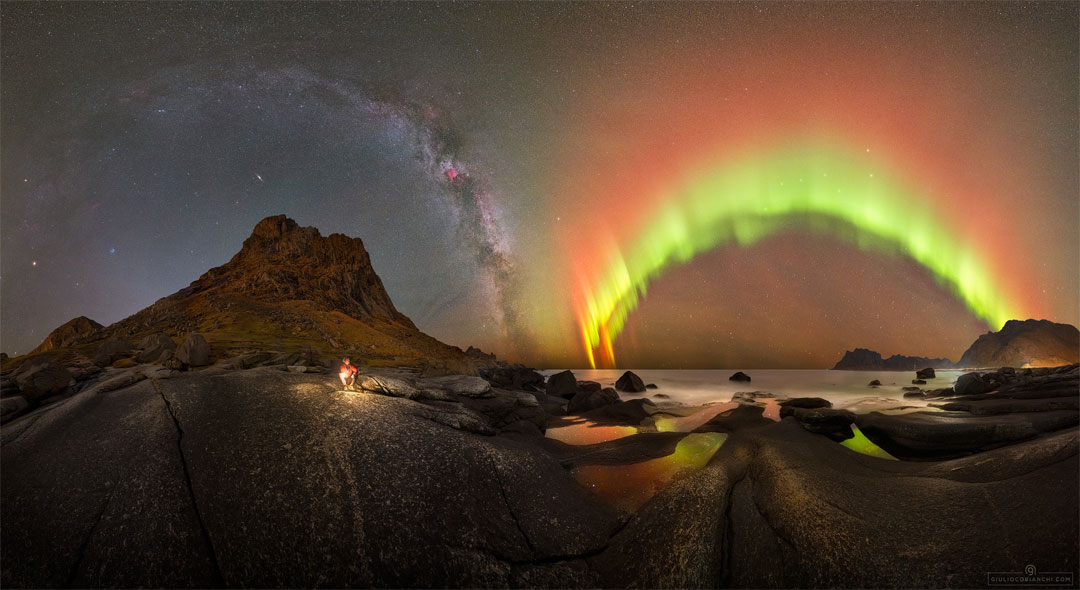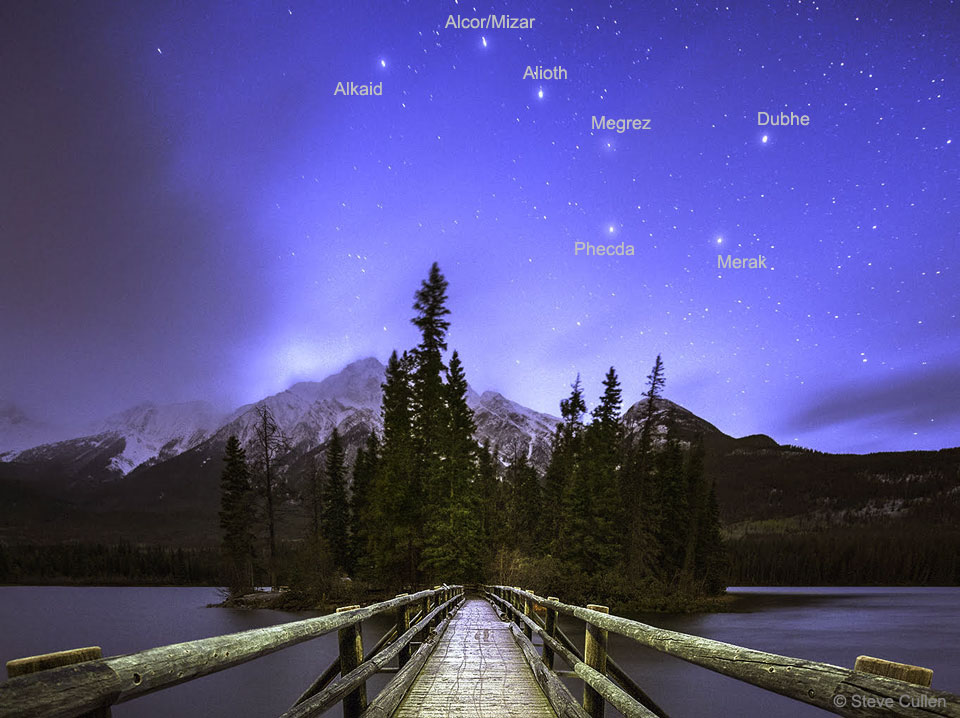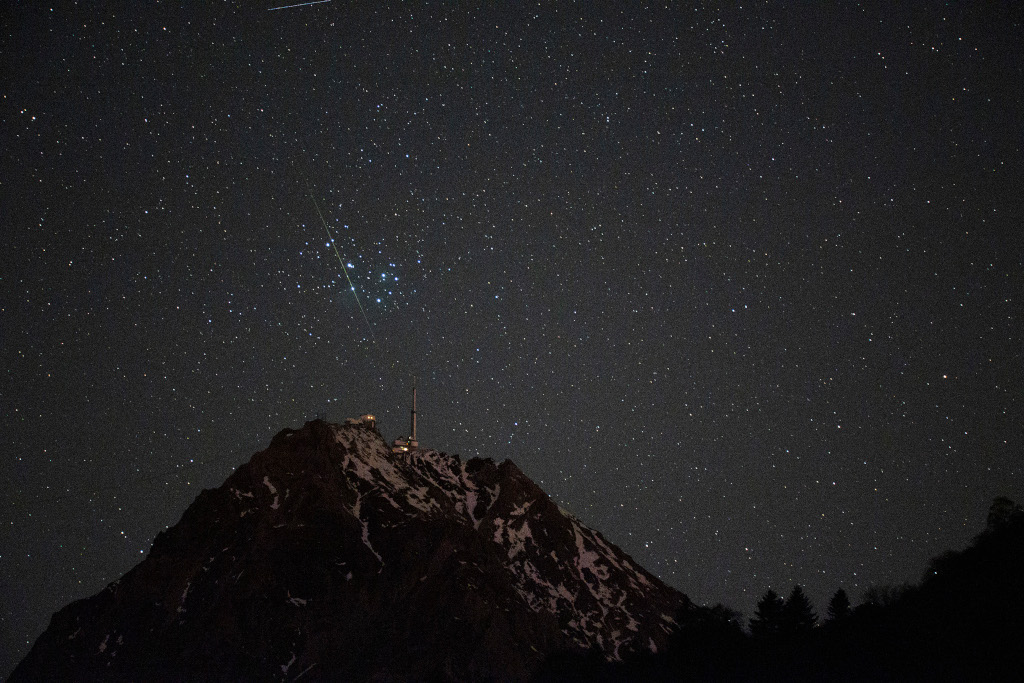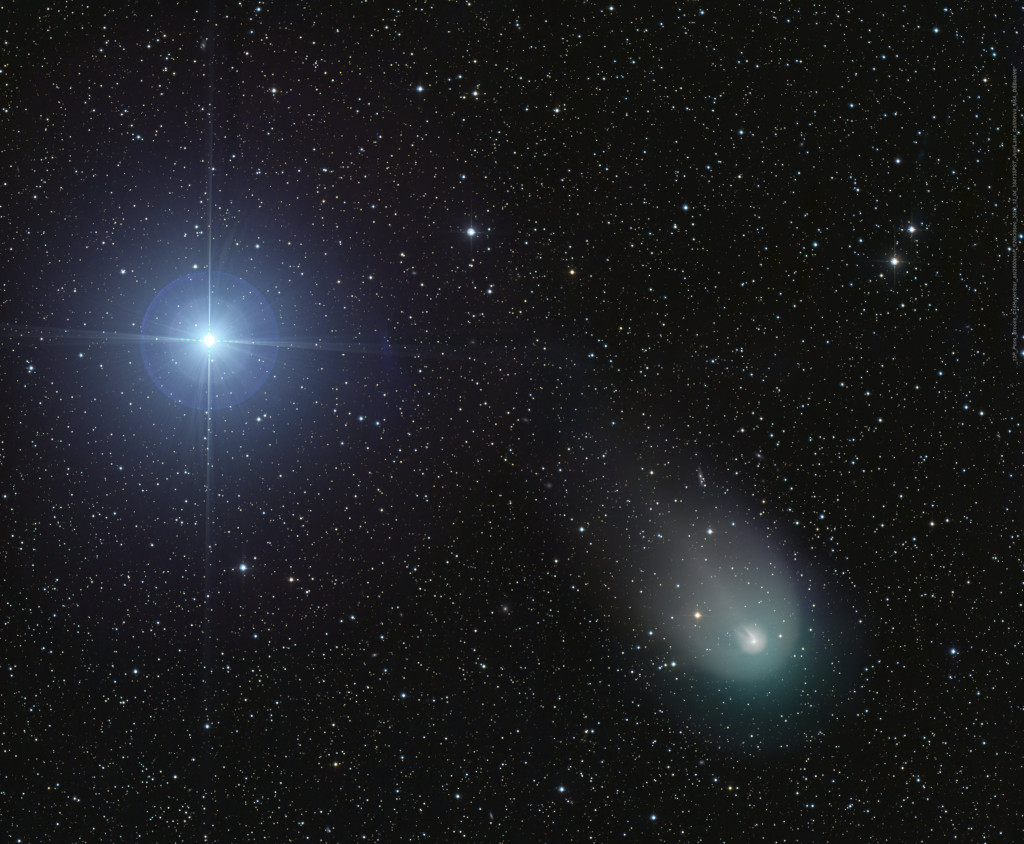
Nombre total de pages vues
13/12/2023
AERONAUTIQUE - Les plus gros avions du monde - Hughes H-4 Hercules (Spruce Goose)

12/12/2023
ASTRONOMY - Aurora and Milky Way over Norway
2023 December 12
Image Credit & Copyright: Giulio Cobianchi
Explanation: What are these two giant arches across the sky? Perhaps the more familiar one, on the left, is the central band of our Milky Way Galaxy. This grand disk of stars and nebulas here appears to encircle much of the southern sky. Visible below the stellar arch is the rusty-orange planet Mars and the extended Andromeda galaxy. But this night had more! For a few minutes during this cold arctic night, a second giant arch appeared encircling part of the northern sky: an aurora. Auroras are much closer than stars as they are composed of glowing air high in Earth's atmosphere. Visible outside the green auroral arch is the group of stars popularly known as the Big Dipper. The featured digital composite of 20 images was captured in mid-November 2022 over the Lofoten Islands in Norway.
11/12/2023
ASTRONOMY - Solar Minimum versus Solar Maximum
2023 December 11
Video Credit: NASA, SDO, SVS
Explanation: The surface of our Sun is constantly changing. Some years it is quiet, showing relatively few sunspots and active regions. Other years it is churning, showing many sunspots and throwing frequent Coronal Mass Ejections (CMEs) and flares. Reacting to magnetism, our Sun's surface goes through periods of relative calm, called Solar Minimum and relative unrest, called Solar Maximum, every 11 years. The featured video shows on the left a month in late 2019 when the Sun was near Solar Minimum, while on the right a month in 2014 when near Solar Maximum. The video was taken by NASA's Solar Dynamic Observatory in far ultraviolet light. Our Sun is progressing again toward Solar Maximum in 2025, but displaying even now a surface with a surprisingly high amount of activity.
10/12/2023
ASTRONOMY - Big Dipper over Pyramid Mountain
2023 December 10
Image Credit & Copyright: Steve Cullen
Explanation: When did you first learn to identify this group of stars? Although they are familiar to many people around the world, different cultures have associated this asterism with different icons and folklore. Known in the USA as the Big Dipper, the stars are part of a constellation designated by the International Astronomical Union in 1922 as the Great Bear (Ursa Major). The recognized star names of these stars are (left to right) Alkaid, Mizar/Alcor, Alioth, Megrez, Phecda, Merak, and Dubhe. Of course, stars in any given constellation are unlikely to be physically related. But surprisingly, most of the Big Dipper stars do seem to be headed in the same direction as they plough through space, a property they share with other stars spread out over an even larger area across the sky. Their measured common motion suggests that they all belong to a loose, nearby star cluster, thought to be on average only about 75 light-years away and up to 30 light-years across. The cluster is more properly known as the Ursa Major Moving Group. The featured image captured the iconic stars recently above Pyramid Mountain in Alberta, Canada.
09/12/2023
AERONAUTIQUE - Les plus gros avions du monde - Stratolaunch

ASTRONOMY - Pic du Pleiades
2023 December 9
Image Credit & Copyright: Jean-Francois Graffand
Explanation: Near dawn on November 19 the Pleiades stood in still dark skies over the French Pyrenees. But just before sunrise a serendipitous moment was captured in this single 3 second exposure; a bright meteor streak appeared to pierce the heart of the galactic star cluster. From the camera's perspective, star cluster and meteor were poised directly above the mountain top observatory on the Pic du Midi de Bigorre. And though astronomers might consider the Pleiades to be relatively close by, the grain of dust vaporizing as it plowed through planet Earth's upper atmosphere actually missed the cluster's tight grouping of young stars by about 400 light-years. While recording a night sky timelapse series, the camera and telephoto lens were fixed to a tripod on the Tour-de-France-cycled slopes of the Col du Tourmalet about 5 kilometers from the Pic du Midi.
08/12/2023
ASTRONOMY - Vega and Comet 12P/Pons-Brooks
2023 December 8
Image Credit & Copyright: Dan Bartlett
Explanation: On December 4, periodic Comet 12P/Pons-Brooks shared this telescopic field of view with Vega, alpha star of the northern constellation Lyra. Fifth brightest star in planet Earth's night, Vega is some 25 light-years distant while the much fainter comet was about 21 light-minutes away. In recent months, outbursts have caused dramatic increases in brightness for Pons-Brooks though. Nicknamed the Devil Comet for its hornlike appearance, fans of interstellar spaceflight have also suggested the distorted shape of this comet's large coma looks like the Millenium Falcon. A Halley-type comet, 12P/Pons-Brooks last visited the inner Solar System in 1954. Its next perihelion passage or closest approach to the Sun will be April 21, 2024. That's just two weeks after the April 8 total solar eclipse path crosses North America. But, highly inclined to the Solar System's ecliptic plane, the orbit of periodic Comet 12P/Pons-Brooks will never cross the orbit of planet Earth.
07/12/2023
SANTé/MEDECINE - L'Histoire en images - L'Égypte antique et la momification

BIOMIMETISME - Innovations inspirées par la Nature - Le Shinkansen, le train au bec d'oiseau

GEMMOLOGIE - Joaillerie Céleste (Et spaciale) - La conquête de l’espace (A partir des années 1950)


ASTRONOMY - The Heart of the Soul Nebula
2025 December 9 The Heart of the Soul Nebula Image Credit & Copyright: Nicola Bugin Explanation: This cosmic close-up looks deep ins...
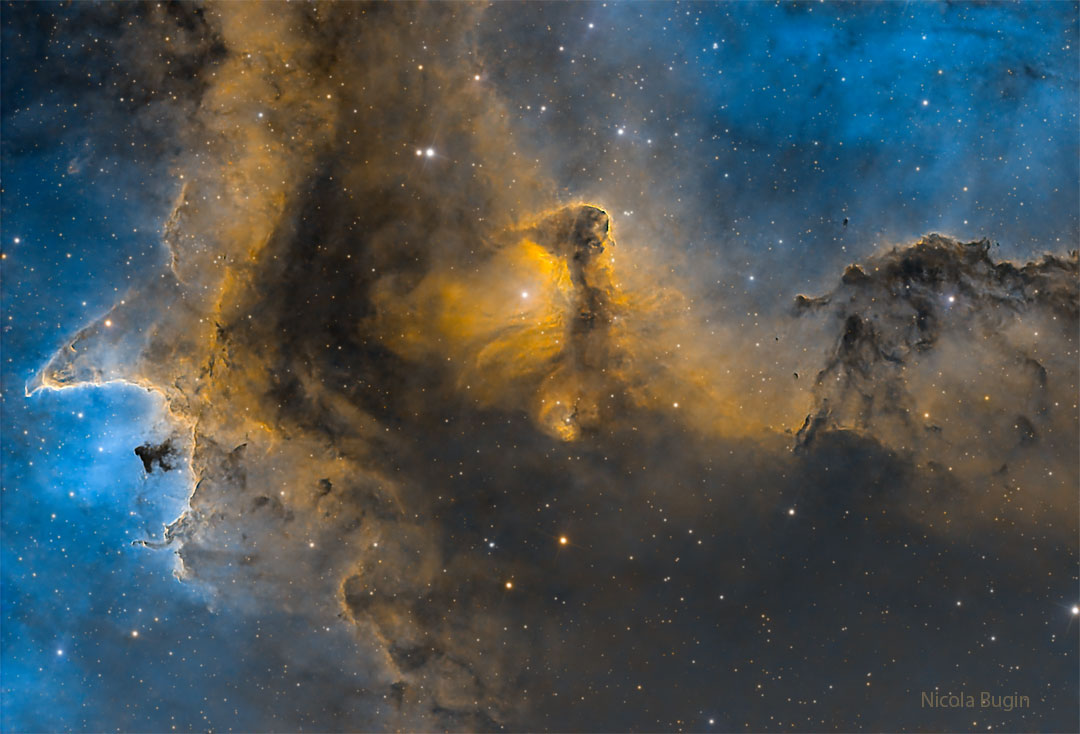
-
2022 September 26 All the Water on Planet Earth Illustration Credit: Jack Cook, Adam Nieman, Woods Hole Oceanographic Institution ; Data ...
-
2025 May 11 The Surface of Venus from Venera 14 Image Credit: Soviet Planetary Exploration Program , Venera 14 ; Processing & Copyri...
